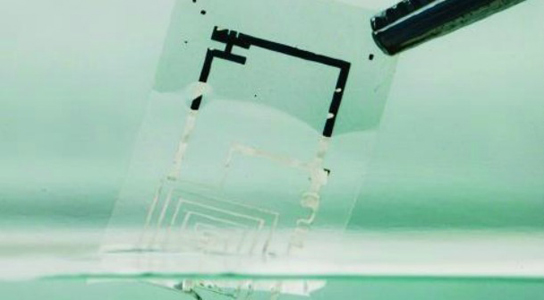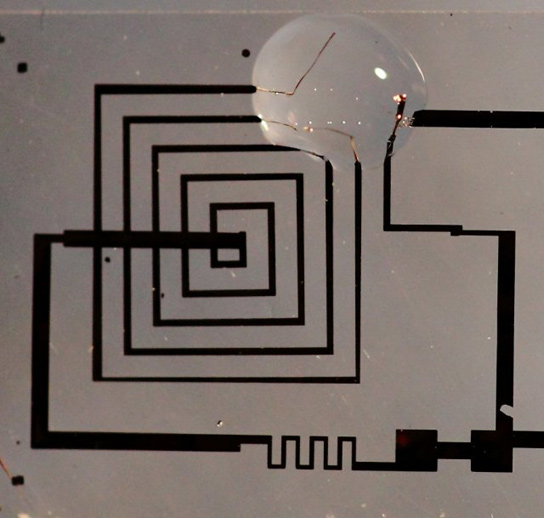Dissolvable Electronic Components Could Be Used in Medical Implants
October 2, 2012

A team of scientists has created flexible electronic components that will dissolve inside the body or in water. These components could be used to make smart devices, implants and cybernetics that disintegrate once they are no longer useful. This could help alleviate the electronic waste that’s being created by medical implants.
The scientists published their findings in the journal Science. The team has designed an imaging system that monitors tissue from within a mouse, a thermal patch that prevents infection after a surgical site is closed up, solar cells and strain and temperature sensors. John Rogers, materials scientists at the University of Illinois at Urbana-Champaign, and Fiorenzo Omenetto, a biomedical engineer at Tufts University in Medford, Massachusetts, state that after several years of work, they can now make just about any kind of high-performance electronic or optical device that’s dissolvable.

They started their work in 2009 with biocompatible silk, which was made by processing and molding proteins from silkworm cocoons to make thin sheets that would conform as well as stick to tissues, like the surface of the brain. By changing the processing conditions, they could control how long it takes the silk proteins to break down when wet. The researchers placed integrated circuits together with LEDs and other electronic devices in the silk. They’ve used it to create a variety of different devices that require sensitive electrical measurements. The devices showed no adverse effects in early animal tests, but the devices left behind some metals that didn’t dissolve.
In order to make the system disintegrate, they switched from stable metals, such as copper or silver for electrical connections, and started using magnesium since it’s conductive and reactive. It was used to connect integrated circuits and to form antennas as well as wires that allow the devices to be powered from outside the body.
The other important factor is dealing with the silicon wafer. Since a normal silicon wafer would take roughly a 1,000 years for it to dissolve in water, the team used silicon membranes that are less than 100 nanometers thick and dissolve at a rate of 4.5 nanometers every day. The team can control the degradation by tuning the properties of the silk and by changing the thickness of the silicon.
Other scientists have been working with organic components rather than silicon, since those would break up more easily. However, those components aren’t compatible with current manufacturing techniques.
The group will use DARPA funding to scale up the production of the silicon-silk components. Medical implants, which don’t need to be as sophisticated as mobile-phone microprocessors, will probably be made first.
No comments:
Post a Comment